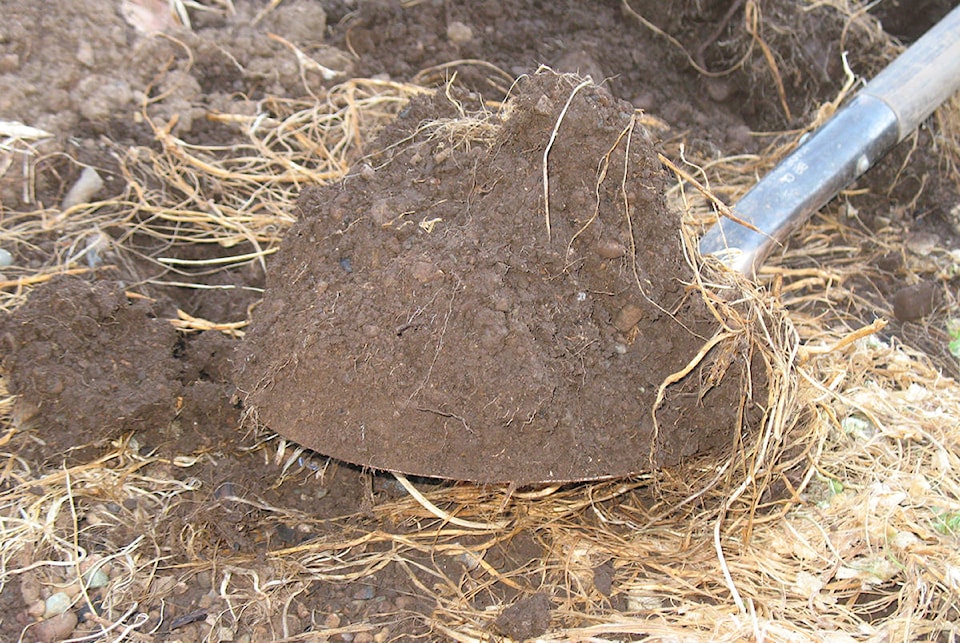By Mary Lowther
It looks like we’re done with winter and have segued into summer without stopping for spring. Last year’s preparations will have gone a long way to protect our gardens against upcoming drought, but we can’t let our guard down.
When I dug under the crimson clover cover crop last week, its thick tangle of roots had gratifyingly held onto soil like a sponge so when the peas and lettuce go in there next week, their roots can absorb water from this layer and I shouldn’t need to water much, if at all, until June.
I also add a thin layer of compost and organic fertilizer and, once the soil warms up and I’ve transplanted my crop, a thick layer of straw mulch I bought from Buckerfield’s. The soil should be warm first though, because mulch will prevent cold soil from warming up.
I also bury meat scraps and all our leftovers directly into the garden in uncropped sections. I dig out a foot-deep hole and bury them in the bottom, re-cover with the soil and lay metal mesh held down on all the edges with slabs of concrete or bricks or stones to keep out digging critters like our cat, Mrs. Premise. The mesh extends about a foot wider than the filled in hole to keep out the cat et al. I leave this on for a week and then re-use it for the next batch of leftovers.
I learned to do this from a wise gardener who laid fish scraps in a bed destined for his tomato crop, and this man could garden! He dug them under three weeks before his tomatoes went in. Why toss a valuable resource like this into the garbage where it adds to landfills instead of contributing nutrients to the soil and helping it retain water? I don’t put animal products into the compost heap though because I can’t bury them as deeply. We’ve been here more than 10 years and the practice hasn’t attracted any bears yet.
Several other methods will also help crops survive without much or any water. Clay layered in the compost heap when building it creates stable humus that, when applied to the soil, provides a constant source of nutrients for micro-organisms. Compost and these organisms, along with minerals and mycelium from fungi, create water-retaining loamy soils that resist gravity and provide a reliable source of water for our crops.
Plant farther apart than the seed packet recommends so there’s less competition from neighbouring roots. Use soaker hoses instead of overhead watering that wastes water. Don’t use pesticides as these will also kill off beneficial soil organisms that help with water retention. Get your soil tested to see if you need to add minerals to the mix. When the soil is well balanced, crops will be healthy and more resilient to drought. Make and use compost or weed tea to keep disease at bay. Healthy plants don’t use up their energy fighting off diseases and will survive better.
Events:
Perennial Exchange at Dinter Nursery, Saturday, March 30 from 9:30 a.m. on.
Master Gardener Clinic at Dinter Nursery, Saturday, March 30 from 10 a.m. on. Bring your garden problems or questions.
Please contact mary_lowther@yahoo.ca with questions and suggestions since I need all the help I can get.
